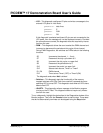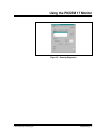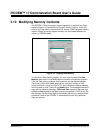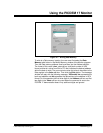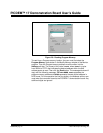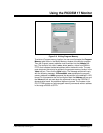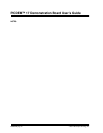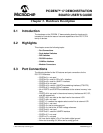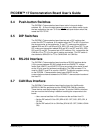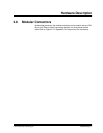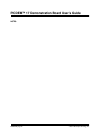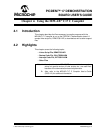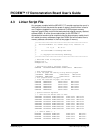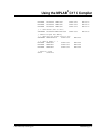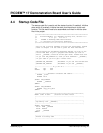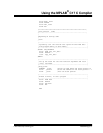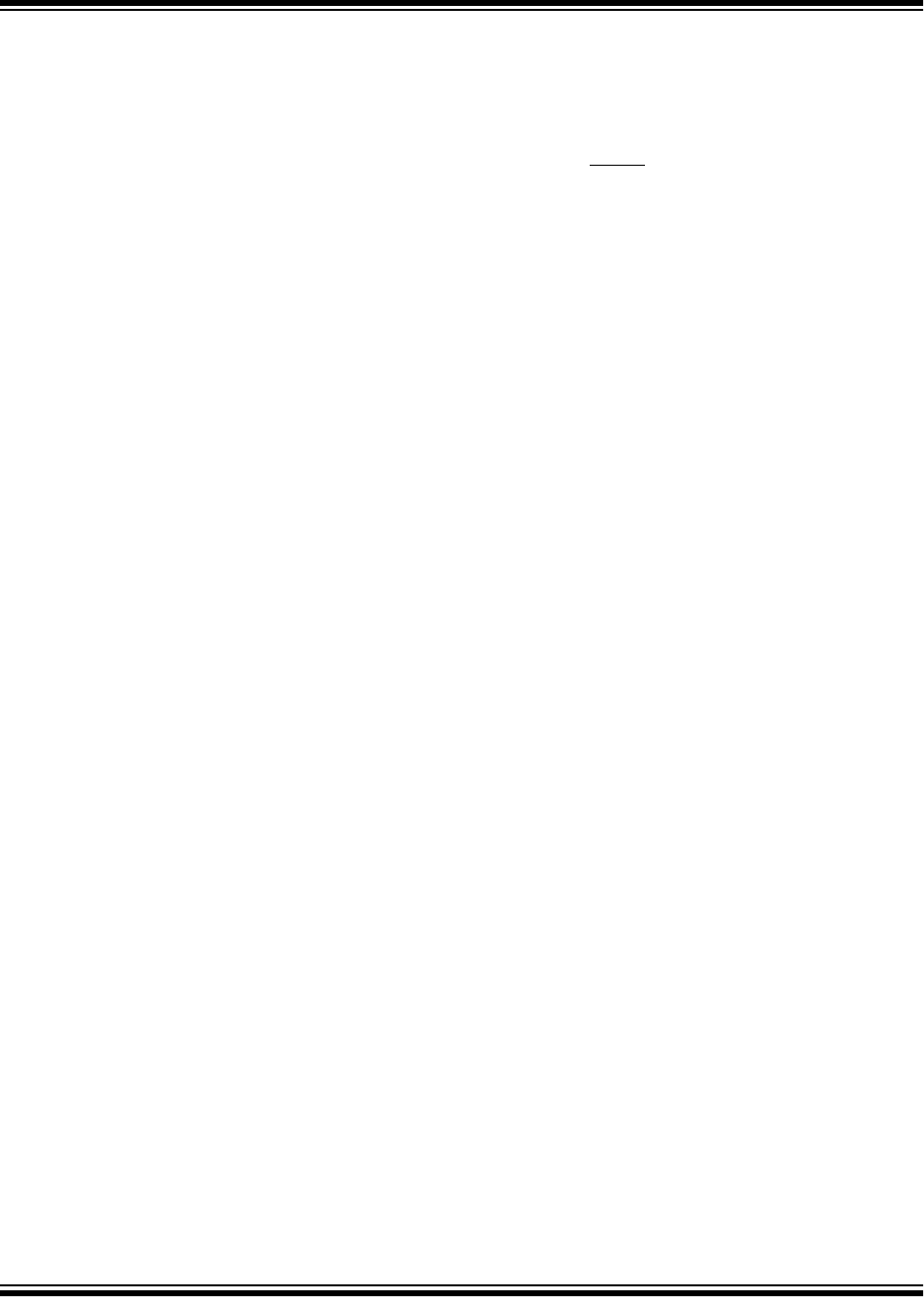
PICDEM™ 17 Demonstration Board User’s Guide
DS39024B-page 20 2001 Microchip Technology Inc.
3.4 Push-button Switches
The PICDEM 17 demonstration board has a total of nine push-button
switches. S5 – S12 are the eight general purpose push-button switch inputs
that are available to the user. S1 is the MCLR
reset push-button switch that
resets the PIC17C7XX.
3.5 DIP Switches
The PICDEM 17 demonstration board has two sets of DIP switches that
control the SPI/I
2
C interfaces. S13 enables either the I
2
C or SPI I/O pins from
the microcontroller to the peripherals. To use I
2
C, make sure the positions
labeled SDA and SCL are ON and SCK, SDO, SDI, and CS are OFF. To use
SPI, make sure the position labeled SDA and SCL are OFF and SCK, SDO,
SDI, and CS are ON. The second set of DIP switches, S14, routes either the
CAN Bus I/O or I
2
C I/O to the set of modular connectors. This DIP switch is
also labeled to SDA/SCL for I
2
C or CANH/CANL for CAN Bus.
3.6 RS-232 Interface
The PICDEM 17 demonstration board provides a RS-232 interface device
(U3) to convert between RS-232 voltage levels and CMOS/TTL voltage
levels. Both USART1 and USART2 I/O pins are routed to this device as well
as the I/O pins used for hardware handshaking. The DB9 connector P1 is
used for USART1 and P2 is used for USART2. The Monitor program running
on the PICDEM 17 demonstration board uses USART2 for the
communications channel between the PICDEM 17 demonstration board and
the Host PC.
3.7 CAN Bus Interface
The PICDEM 17 demonstration board has the layout for the Microchip
MCP2510 CAN Bus peripheral and the PCA82C250 CAN Bus interface.
These devices must be provided by the user. To use the CAN Bus interface
the user must do the following in addition to adding the components to the
board:
• Use a canned oscillator in O2 and remove the oscillator from O1
• Set the DIP switch S13 for SPI (SDA & SCL OFF, SCK, SDO, SDI, &
CS ON)
• Set the DIP switch S14 for CAN Bus (SDA & SCL OFF, CANH & CANL
ON)



